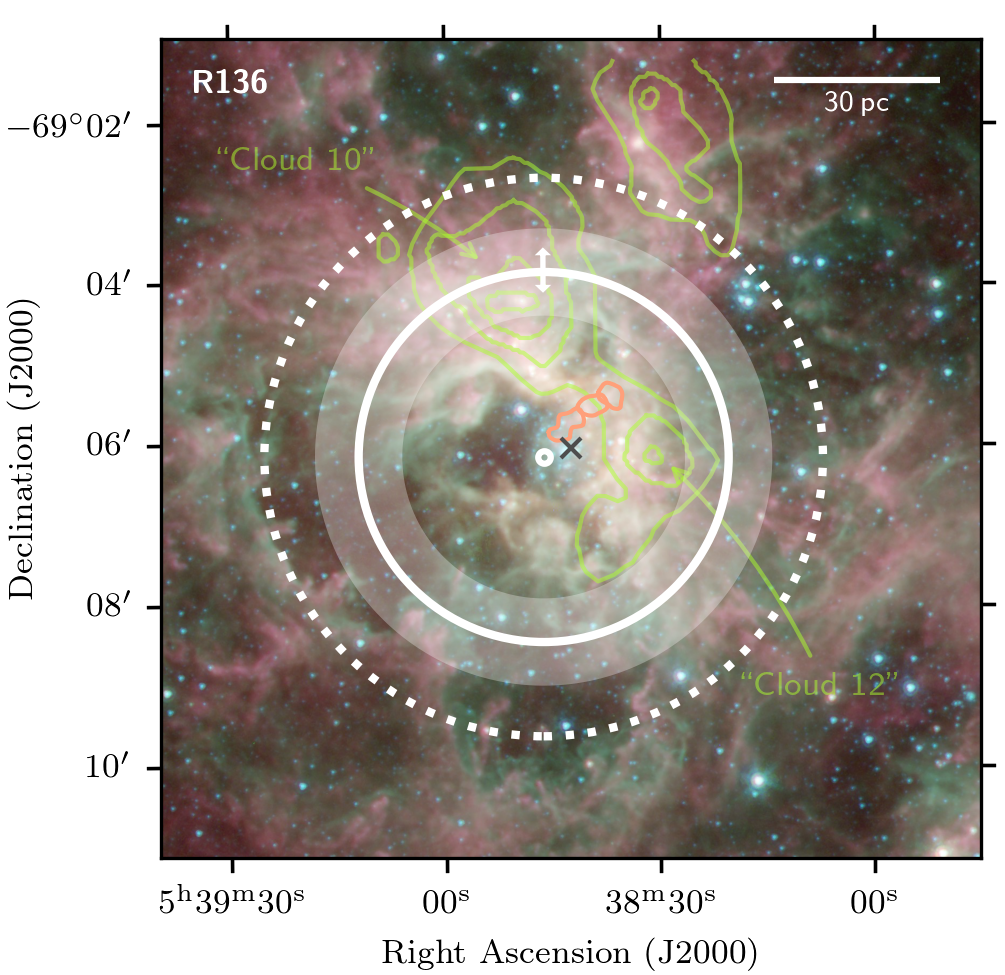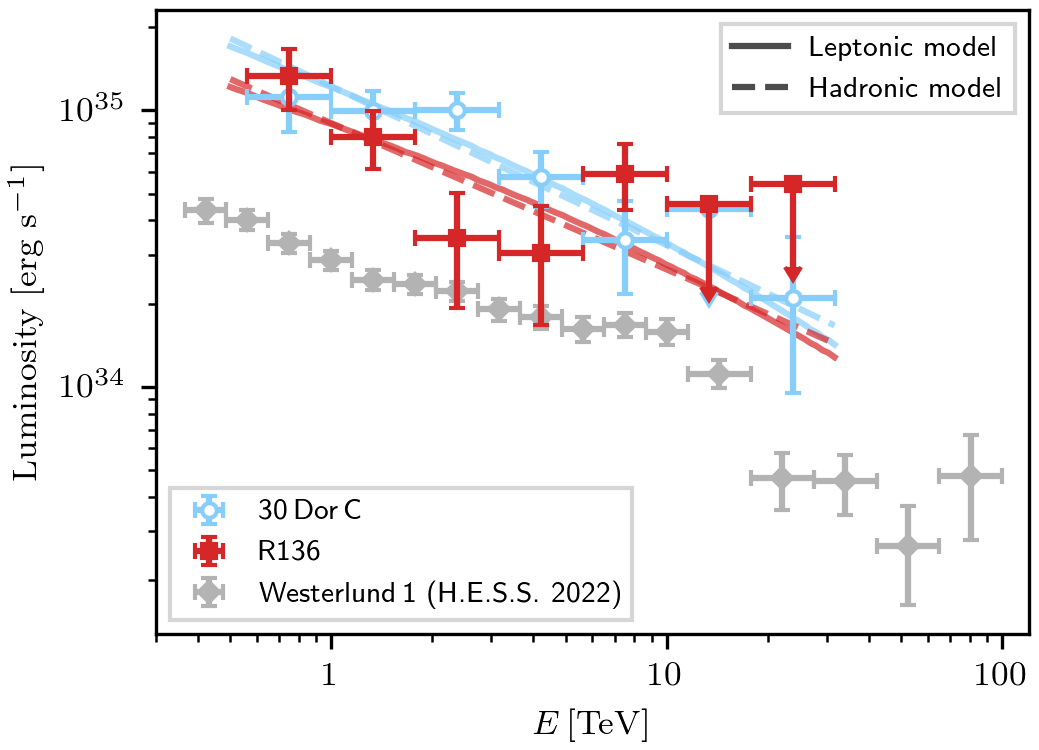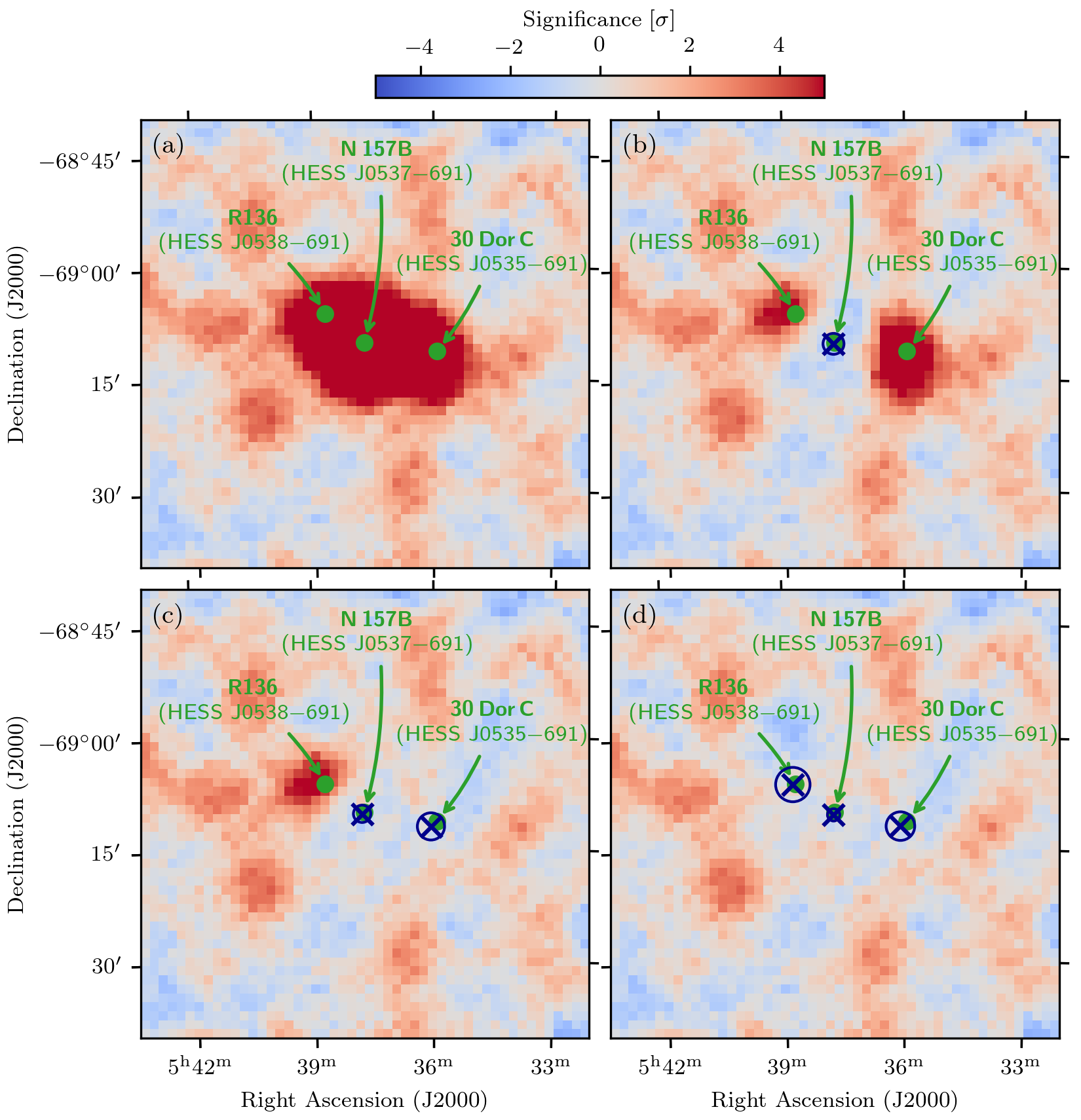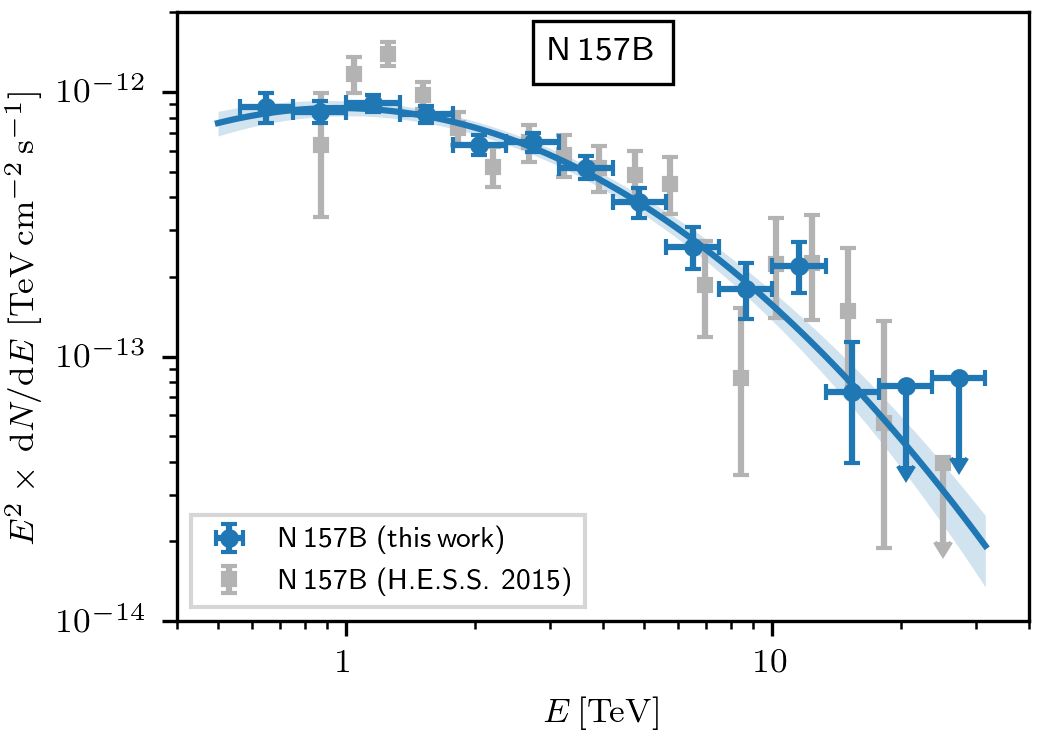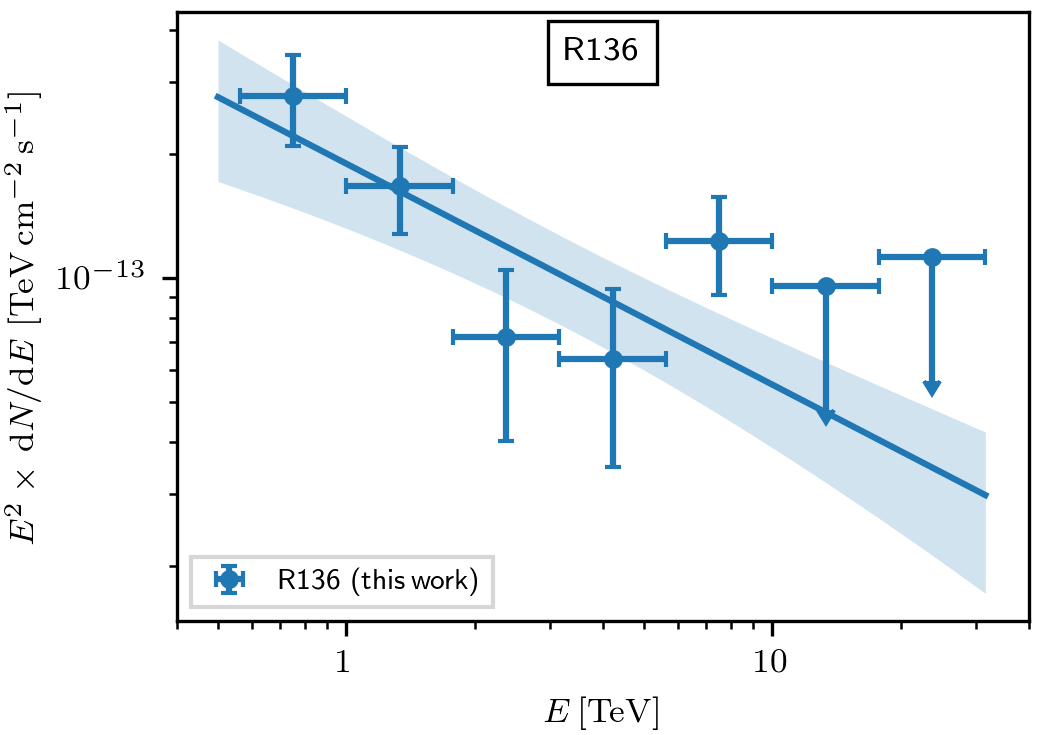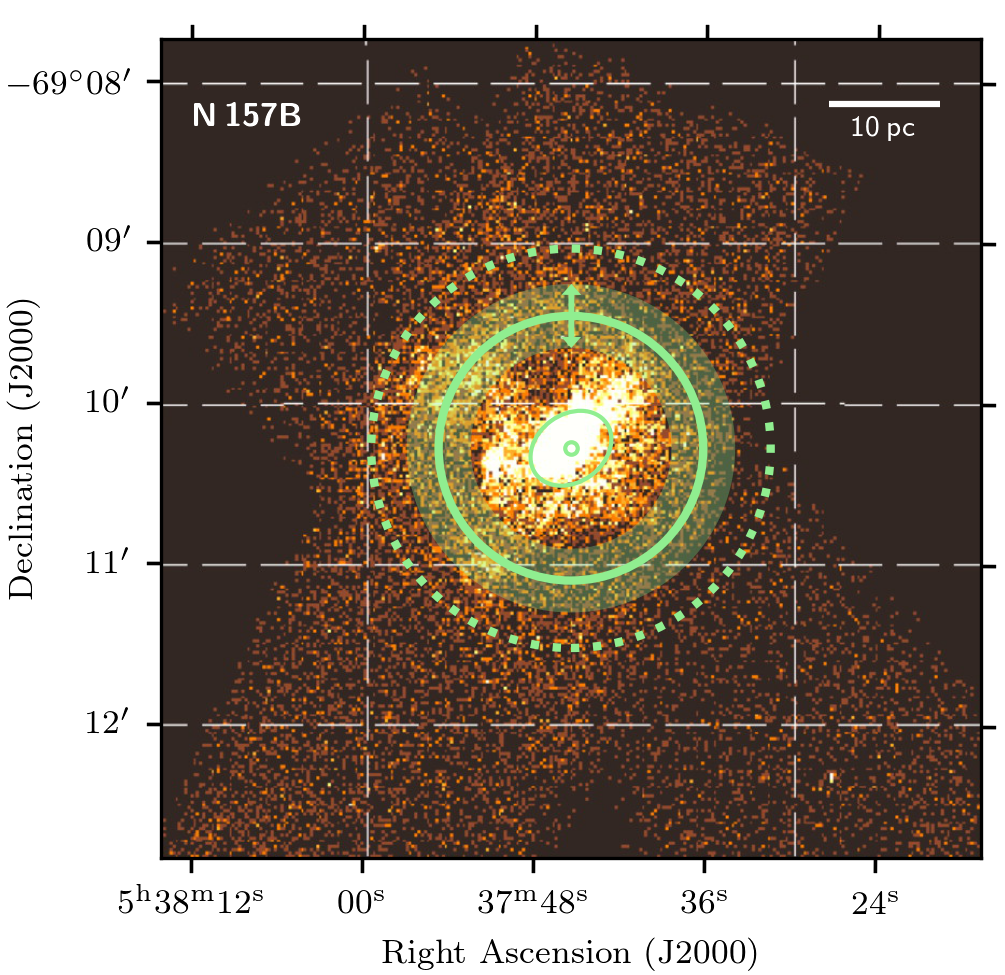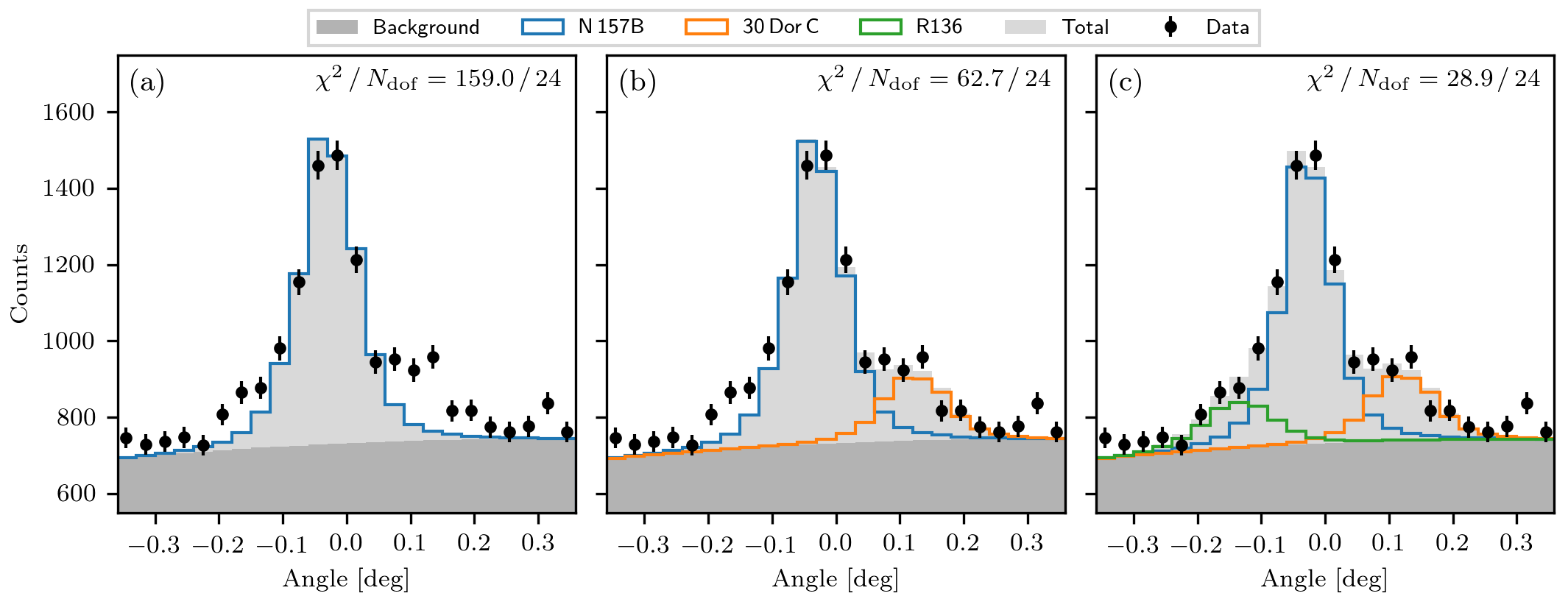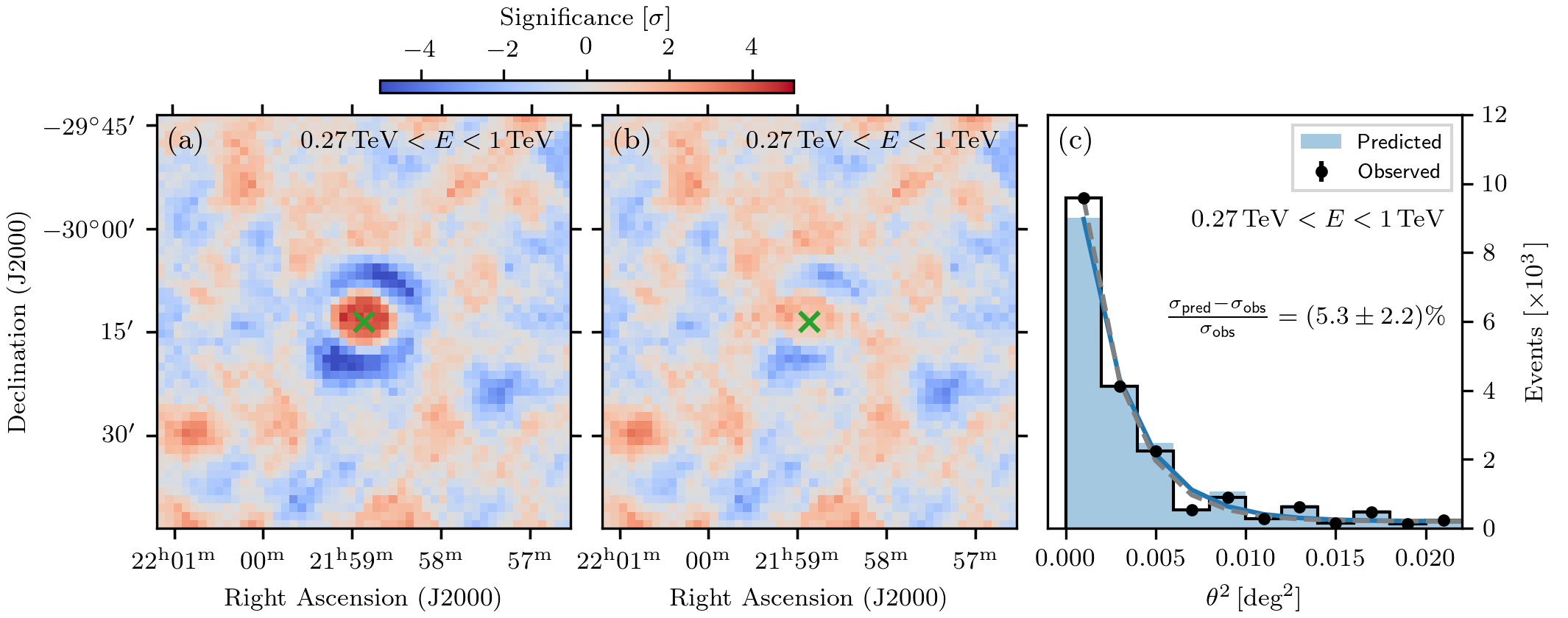The Tarantula Nebula in the Large Magellanic Cloud is known for its high star formation activity. At its center lies the young massive star cluster R136, providing a significant amount of the energy that makes the nebula shine so brightly at many wavelengths. Recently, young massive star clusters have been suggested to also efficiently produce very high-energy cosmic rays, potentially beyond PeV energies. Here, we report the detection of very-high-energy γ-ray emission from the direction of R136 with the High Energy Stereoscopic System, achieved through a multicomponent, likelihood-based modeling of the data. This supports the hypothesis that R136 is indeed a very powerful cosmic-ray accelerator. Moreover, from the same analysis, we provide an updated measurement of the γ-ray emission from 30 Dor C, the only superbubble detected at TeV energies presently. The γ-ray luminosity above 0.5 TeV of both sources is (2–3) × 1035 erg s−1. This exceeds by more than a factor of 2 the luminosity of HESS J1646−458, which is associated with the most massive young star cluster in the Milky Way, Westerlund 1. Furthermore, the γ-ray emission from each source is extended with a significance of >3σ and a Gaussian width of about 30 pc. For 30 Dor C, a connection between the γ-ray emission and the nonthermal X-ray emission appears likely. Different interpretations of the γ-ray signal from R136 are discussed.
Very-high-energy γ-ray emission from young massive star clusters in the Large Magellanic Cloud
- F. Aharonian et al. (H.E.S.S. Collaboration)
- Astrophysical Journal Letters 970, L21 (2024)
- 2024
Abstract
Auxiliary informations
Figure 1
Flux maps
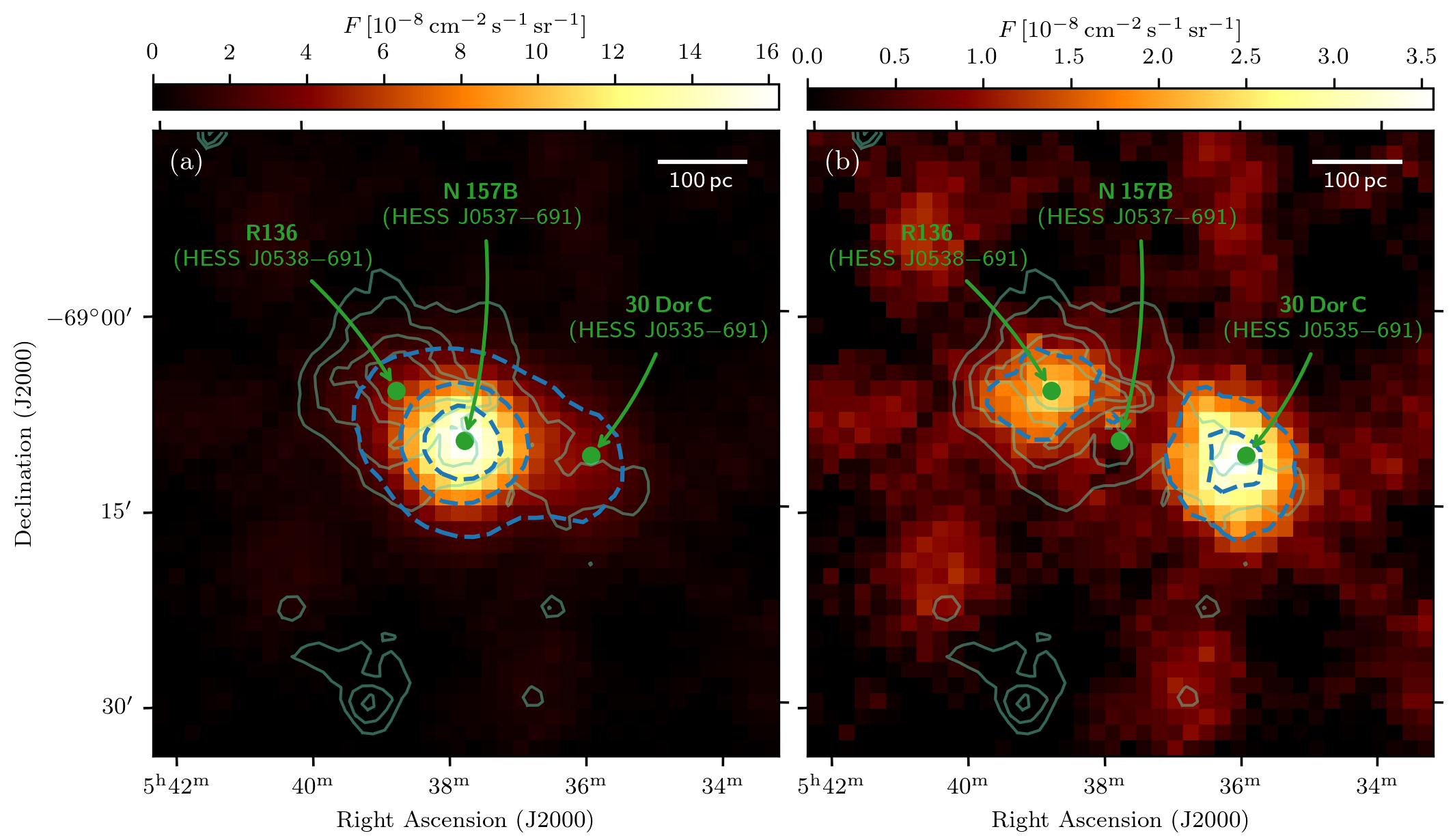
[PDF]
Panel (a): [FITS]
Panel (b): [FITS]
Figure 2
Optical image of 30 Dor C with MWL data overlaid.
Background image credit: ESO, https://www.eso.org/public/images/eso1816a
Figure 3
Infrared image of R136 with MWL data overlaid.
Background image credit: NASA/JPL-Caltech, https://www.spitzer.caltech.edu/image/ssc2020-06b-tarantula-nebula-spitzer-3-color-image
Figure 4
Luminosities of 30 Dor C and R136.
(Errors contain statistical uncertainties only. Upper limits are at 95% confidence level.)
For flux points in machine-readable format, see Figure 7 below.
Figure 5
Significance maps.
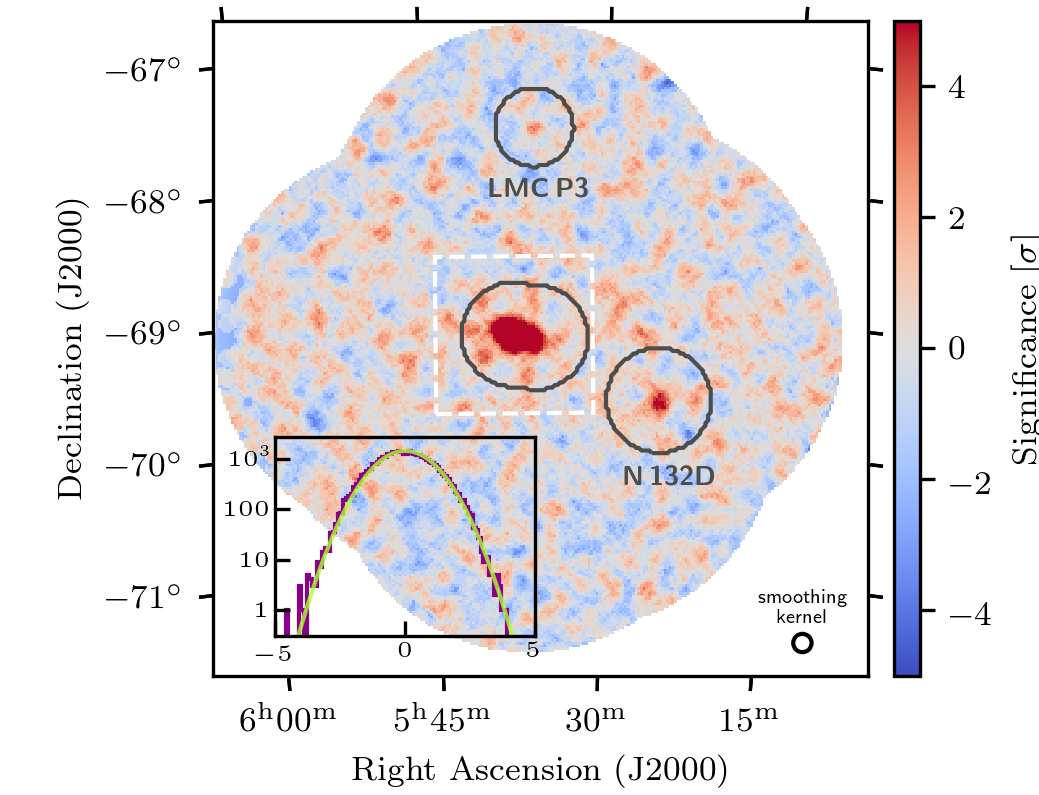
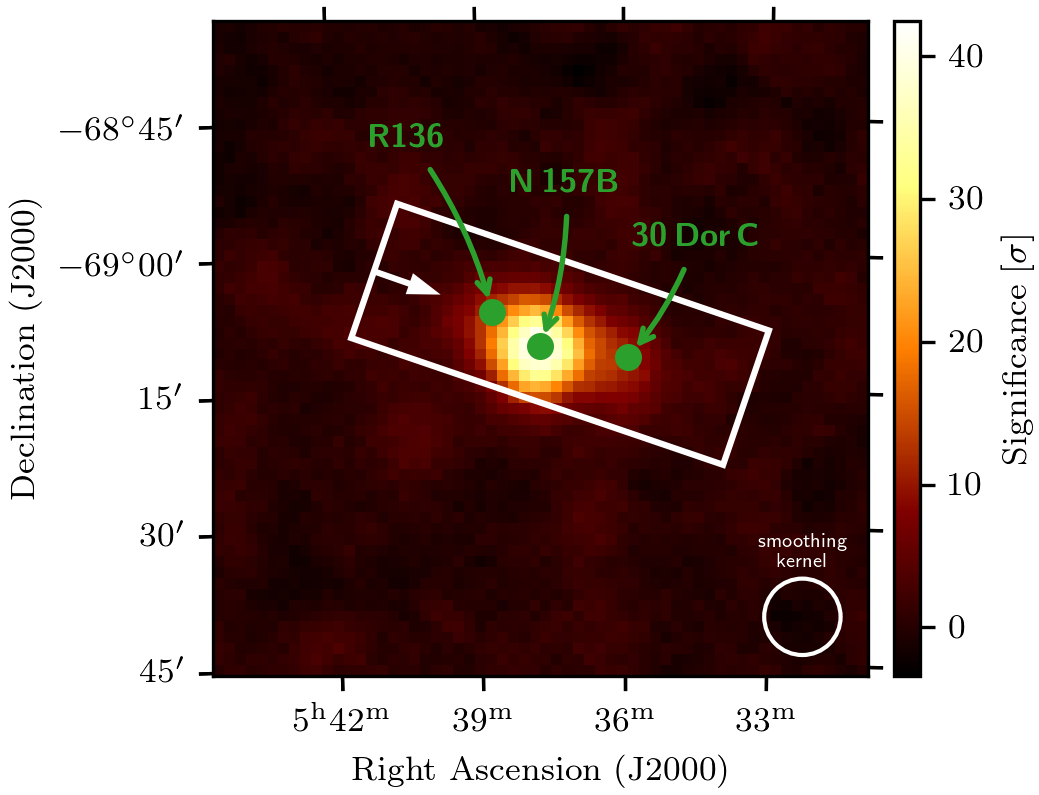
Panel (a): [PDF]
Panel (b): [PDF]
Figure 6
Residual significance maps.
Figure 7
Flux points for N 157B, 30 Dor C, and R136.
N 157B
30 Dor C
R136
Figure 8
X-ray image of N 157B with extent of H.E.S.S. model overlaid.
Background image credit: Chen et al., ApJ 651, 237 (2006).
Figure 9
Count profiles.
Figure 10
Evaluation of PSF systematics using PKS 2155-304.
H.E.S.S. Collaboration Acknowledgement
The support of the Namibian authorities and of the University of Namibia in facilitating the construction and operation of H.E.S.S. is gratefully acknowledged, as is the support by the German Ministry for Education and Research (BMBF), the Max Planck Society, the German Research Foundation (DFG), the Helmholtz Association, the Alexander von Humboldt Foundation, the French Ministry of Higher Education, Research and Innovation, the Centre National de la Recherche Scientifique (CNRS/IN2P3 and CNRS/INSU), the Commissariat à l’Énergie atomique et aux Énergies alternatives (CEA), the U.K. Science and Technology Facilities Council (STFC), the Irish Research Council (IRC) and the Science Foundation Ireland (SFI), the Knut and Alice Wallenberg Foundation, the Polish Ministry of Education and Science, agreement no. 2021/WK/06, the South African Department of Science and Technology and National Research Foundation, the University of Namibia, the National Commission on Research, Science & Technology of Namibia (NCRST), the Austrian Federal Ministry of Education, Science and Research and the Austrian Science Fund (FWF), the Australian Research Council (ARC), the Japan Society for the Promotion of Science, the University of Amsterdam and the Science Committee of Armenia grant 21AG-1C085. We appreciate the excellent work of the technical support staff in Berlin, Zeuthen, Heidelberg, Palaiseau, Paris, Saclay, Tübingen and in Namibia in the construction and operation of the equipment. This work benefited from services provided by the H.E.S.S. Virtual Organisation, supported by the national resource providers of the EGI Federation.


